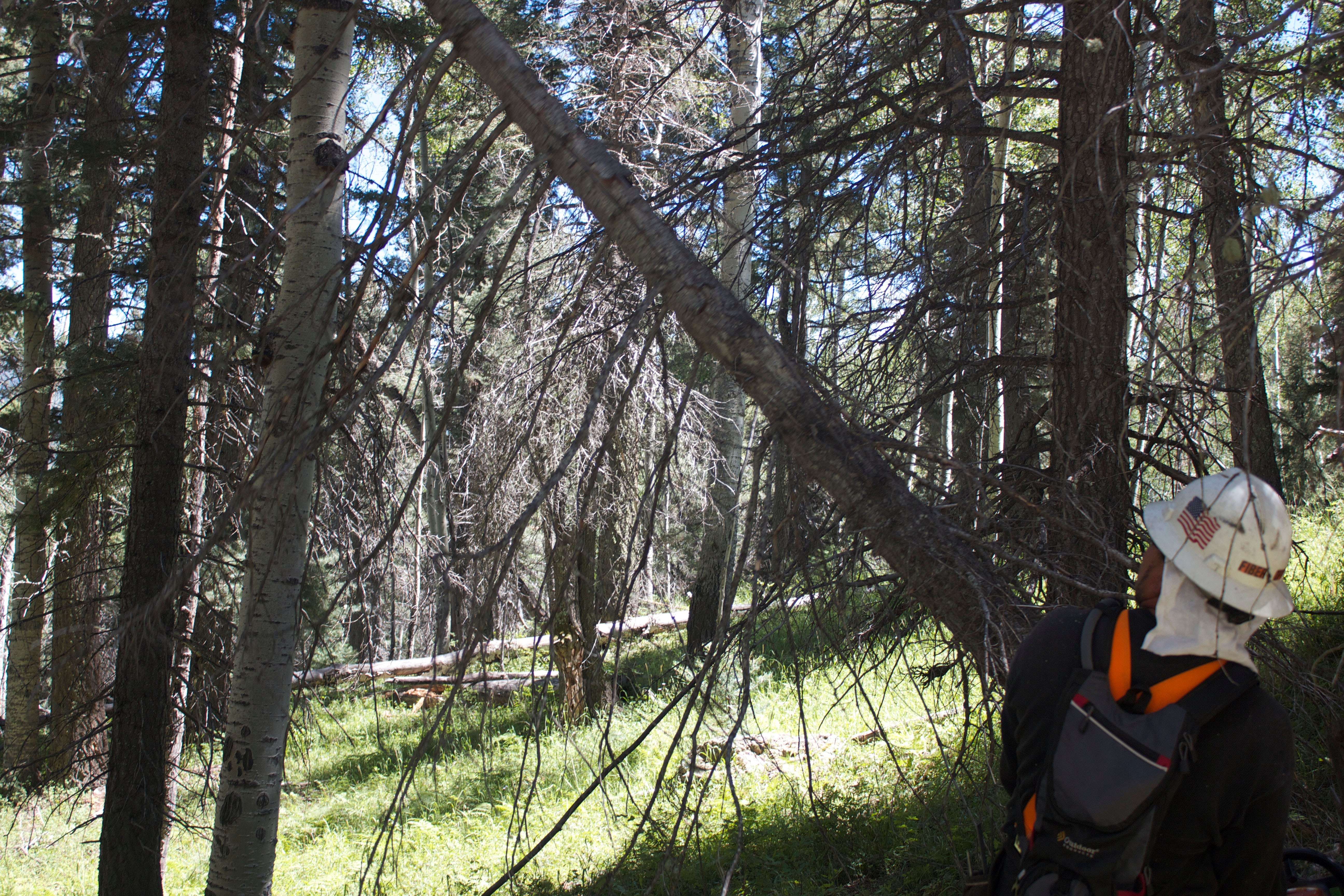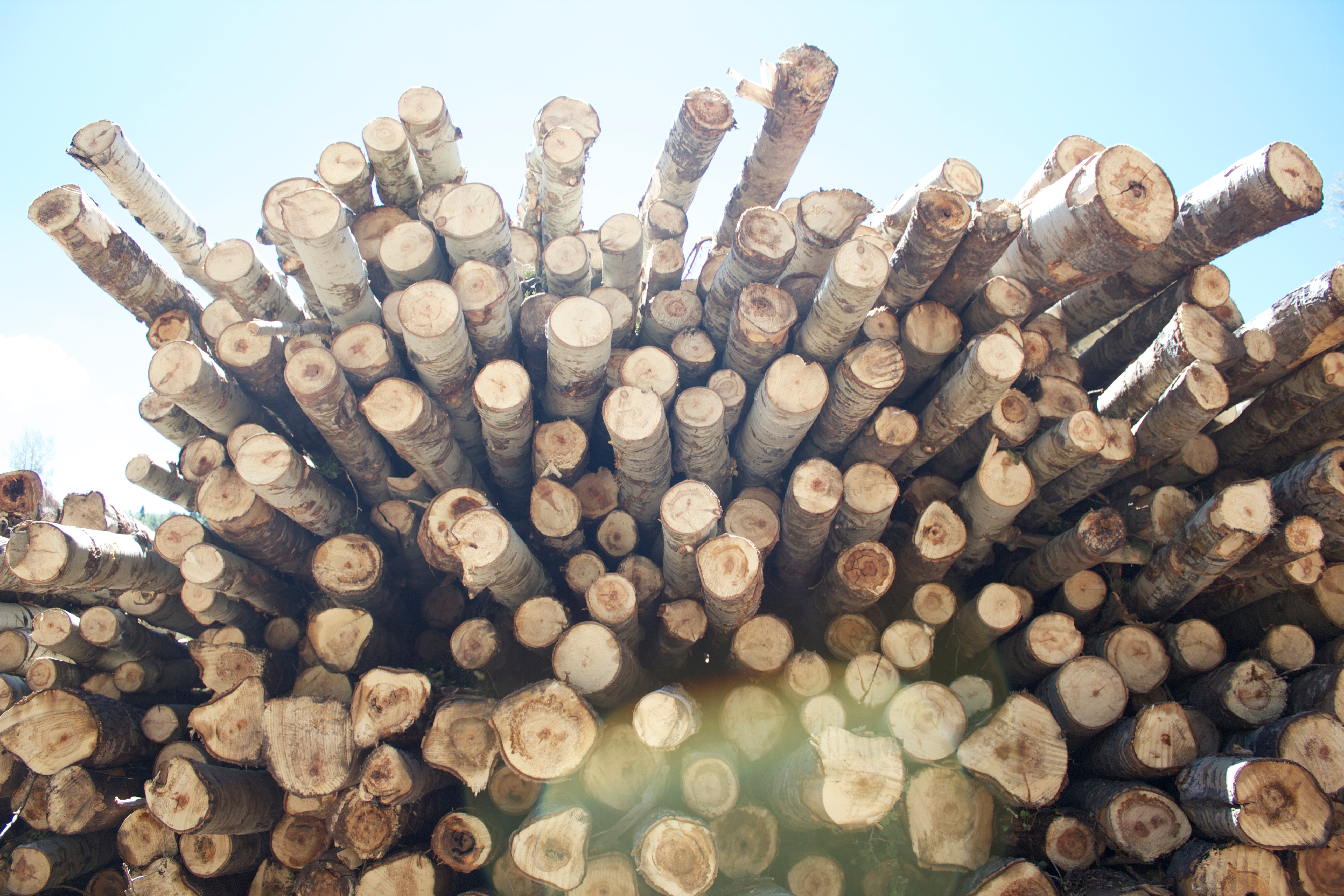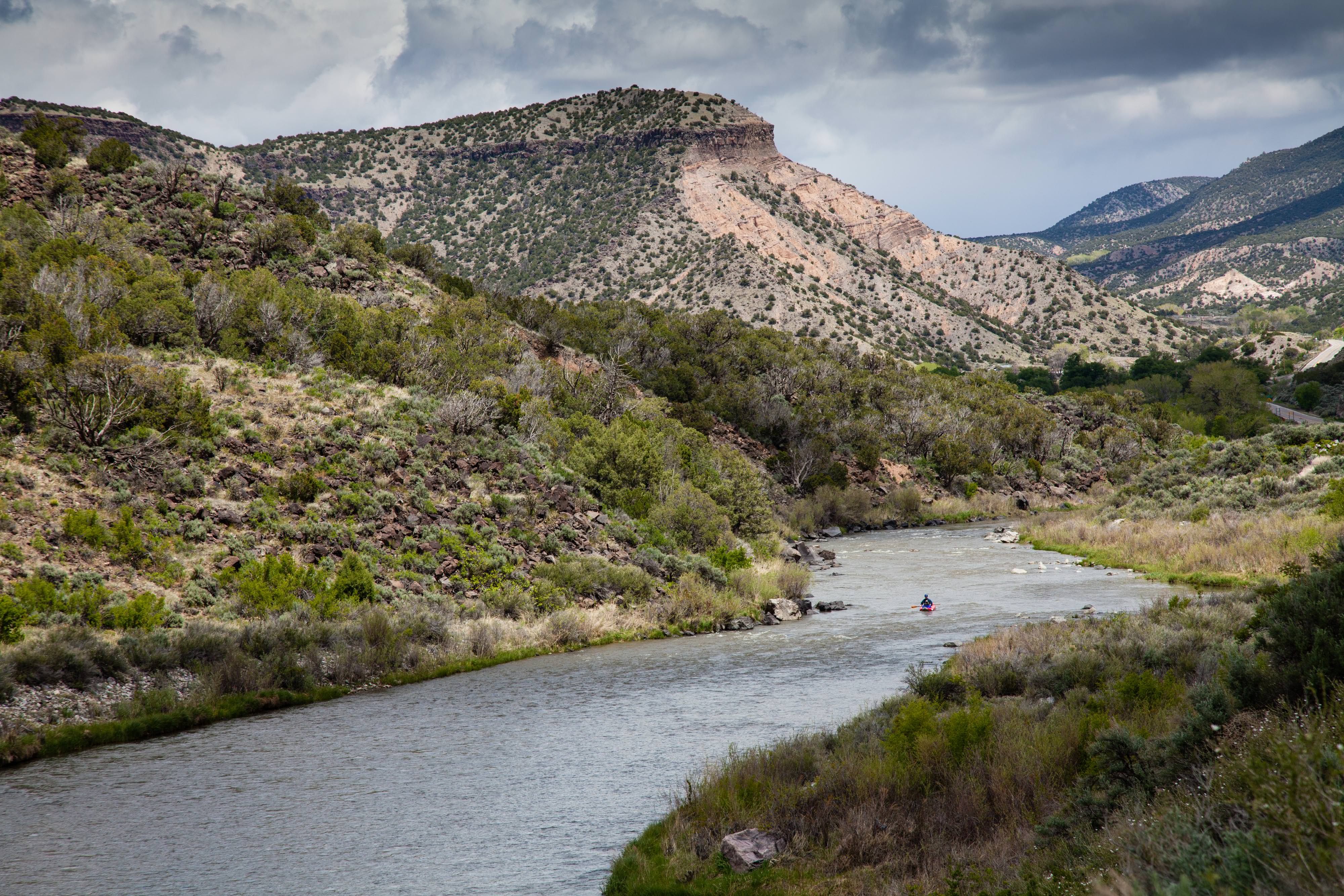Enabling Sustainable Traditional and Cultural Forestry Practices
Forest Councils in New Mexico help communities get the wood needed to heat their homes and cook their meals while improving forest health.
Healthy forests and wood products are essential to sustaining our communities and traditional use practices in northern New Mexico; however, improving access to forests to allow for sustainable forest restoration activities can be challenging. Road conditions, permitting and regulations, and agency staffing issues are some of the obstacles limiting access.
On Thursday, July 28, 2022, The Nature Conservancy (TNC) hosted a virtual learning event to elevate community voices who shared traditional knowledge and life experiences to create opportunities for community-led forest restoration projects that get wood to people who need it.
Matt Piccarello, TNC’s forest and watershed health manager in New Mexico, led the conservation while John Waconda—TNC's Indigenous partnerships program director in the state—moderated the question-and-answer portion of the program.
Featured panelists included:
- Mario Atencio, Vice-President, Torreon/Starlake Chapter of the Navajo Nation Government
- James Duran, Forest Supervisor, Carson National Forest, US Forest Service
- J.R. Logan, Member, Cerro Negro Forest Council and Owner, Del Medio Forestry, LLC
Watch the full recording here.

How Forest Barriers Impact Communities
First up, was Mario Atencio who also serves as an interim and volunteer executive director of the Torreon Community Alliance. Mario is Diné and has served his people since February 2020. He’s integrally involved in the Torreon/Starlake Wood Bank, which he helped revitalize after the program laid dormant for nearly three decades. The community is wholly dependent on firewood for home heating. The bank must collect 3,800 cords of wood per year to ensure everyone’s needs are met.
During the Q&A session, John Waconda asked Mario, “What do you see as the most pressing need for Navajo communities and people in regard to connecting to the forest?
Mario: “We’re one of only a few communities with access to two national forests. Unfortunately, Torreon Councilors don’t have access to these forest resources. It’s much more than getting wood from the forest, it’s about our sacred lands. Mount Taylor, on the Cibola National Forest Mount Taylor Ranger District, is an incredibly sacred mountain to the people and in that whole critical valley there are hundreds if not thousands of traditional cultural properties. Not only that, but in the Santa Fe National Forest, many places have Navajo names in and around the foothills and the area. Obviously, there’s land tenure issues.”
“From the Indigenous perspective, it’s very important that we have access because of the sacredness of land. It’s something that really gives people hope. They have relationships with these incredibly sacred places. Not just for fuel wood, but for plant species needed for medicine, and even just for recreation itself. I hope I don’t understate the great importance of Diné people to access the forests and relate to the forests. It builds resilience into the young people and to the old people.”


James Duran is the Forest Supervisor for Carson National Forest.
Sharing Stewardship Responsibilities
Panelist James Duran’s focus with the Carson National Forest is to ensure the agency works closely with northern New Mexico communities to share stewardship responsibilities while maintaining customs and cultural connection. He noted the Forest Service is looking introspectively with a program called “This is who we are.” The goal is to become a values-based, purpose-driven and relationship focused agency following decades of antagonism that came with a loss of access.
He also highlighted how annual acequia events—ditch cleaning days—provide self-governance, engage community members, and maintain traditional practices while protecting the community’s water resources. The acequia culture was brought to New Mexico from Spanish settlers.

J.R. Logan is a founding member of the Cerro Negro Forest Council.
Building on Forest Council Success
J.R. Logan, Taos County wildland urban interface coordinator, a resident of the village of San Cristobal and a founding member of the Cerro Negro Forest Council, rounded out the presentations. His work with the Forest Councils seeks to restore traditional uses on Forest Service lands for the ecological, cultural and economic health of rural northern New Mexico through the Mayordomo program.
The Mayordomo program enables leñeros—community members trained to use chainsaws—to cut designated trees on an acre-plot to use, sell or share. So far, 150 leñeros have thinned 200 acres, accessed 1,000 cords of wood and have been paid out $60,000 - $300 per job. The leñero program is modeled after the acequia culture which has been around for generations.

After hearing about the success of the Forest Councils, John Waconda asked J.R., “How do you see the role of forest councils evolving?
J.R.: “My goal is to see this model replicated in each community that wants to see it happen across Taos County. Keeping it simple and using a model that has proven to be successful improves our chances of building staying power. James Duran has been a huge advocate for this program. If James leaves tomorrow, we’re concerned that the next forest supervisor may not be as encouraging of this program. The more we can see it replicated, the more communities can see the benefits of this, the more likely the programs are to succeed.”
“We also need to start thinking a little bigger. For instance, in San Cristobal we’re now purchasing green fuel wood cut by leñeros, paying them in cash, stockpiling wood in a wood bank similar to what Mario is doing. Then, we process and seasoning the wood and sell it locally, distributing some of it for free or at a sliding scale cost. It’s a way to add value to our revenue, to put more money into the pockets of leñeros and encourage them to cut more quickly. It’s also a way to spread the benefits of the thinning work happening in the forests to folks in our community who may not be able to be out there with a chainsaw and pickup truck.”
“Lastly, I want to give a tip of the hat to Taos County which now has an agreement with the Carson National Forest that allows the forest service to fund these programs directly without requiring each community to start up a forest council from nothing. The agreement supports grant writing as well as land grant and financial management. It streamlines the efficiencies of the program and makes it replicable in an efficient way.”
John Waconda addressed a question from the audience to James which was, “Are there similar community forest actions in post-wildfire recovery with the unprecedented size of this year’s fire? How could we all best use these models for restoration?

Maximizing Opportunities Through Collaboration
James: “The focus has been getting ahead of the fire. We don’t necessarily have an example right now. We do know that the more we work together and understand these systems, the more opportunities we will have.
“I’m very optimistic that we can come together as a community and figure out what’s best for the community and how everybody contributes. I really appreciate that because for many years we encouraged communities to come to the Forest Service with solutions. While the Forest Service needs to step it up, it’s so important that we work collectively—from our agency to the county, the state, non-profits and community leaders. It’s a powerful force of leadership.”
Thanks to the Taos Ski Valley Foundation for sponsoring this event.
*This interview has been edited for length and clarity.



